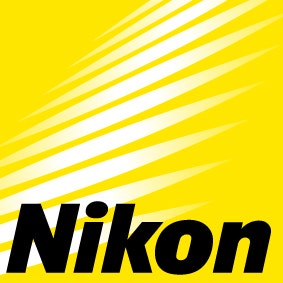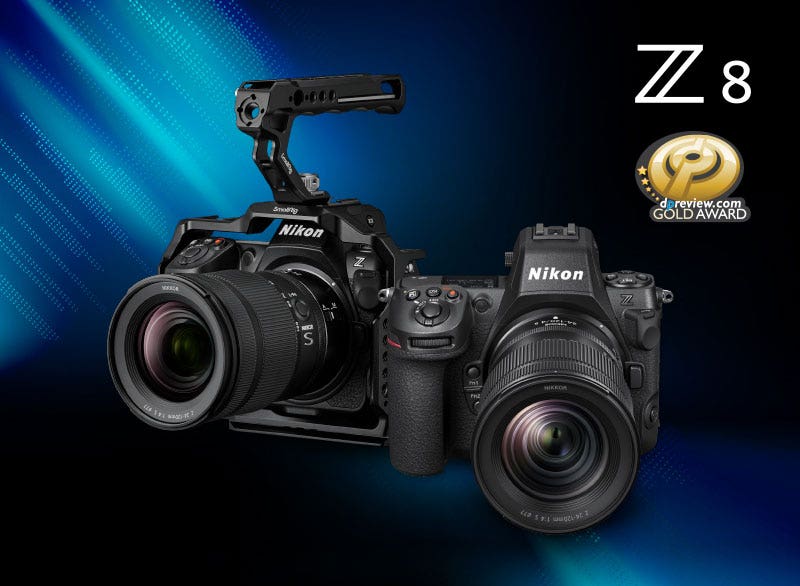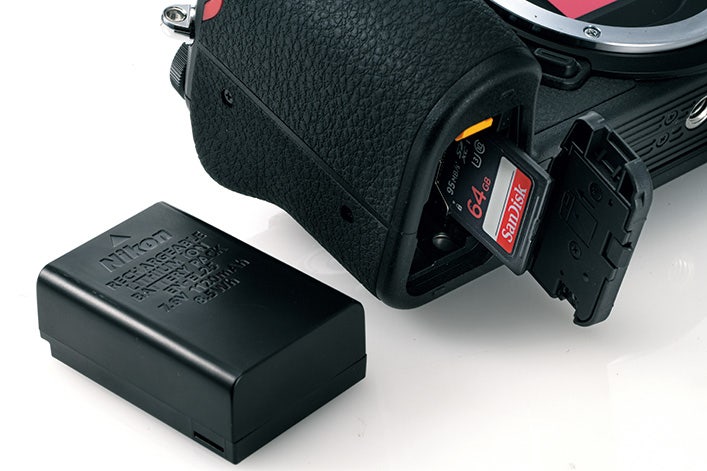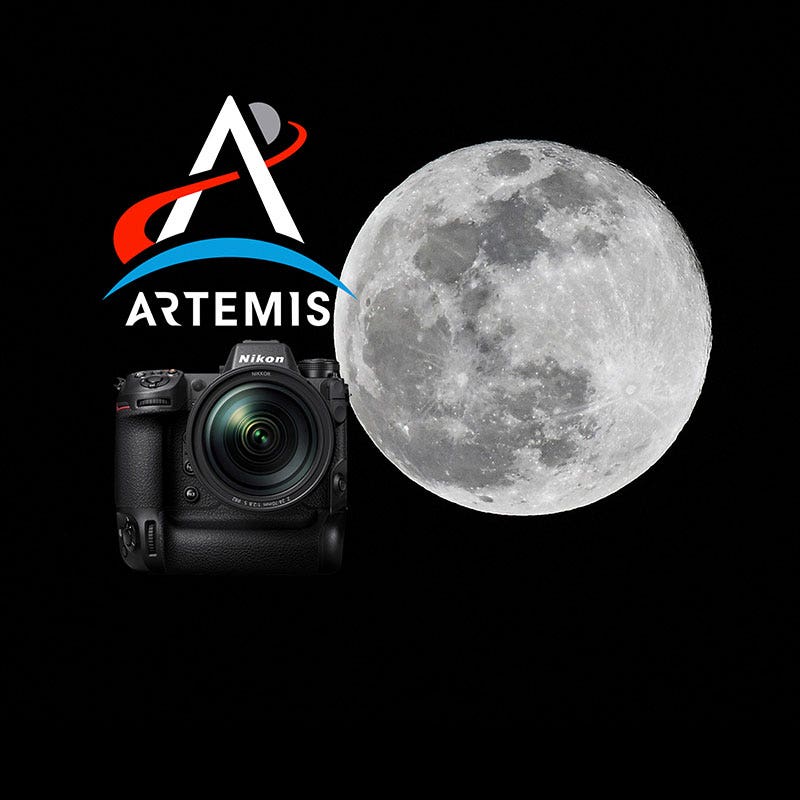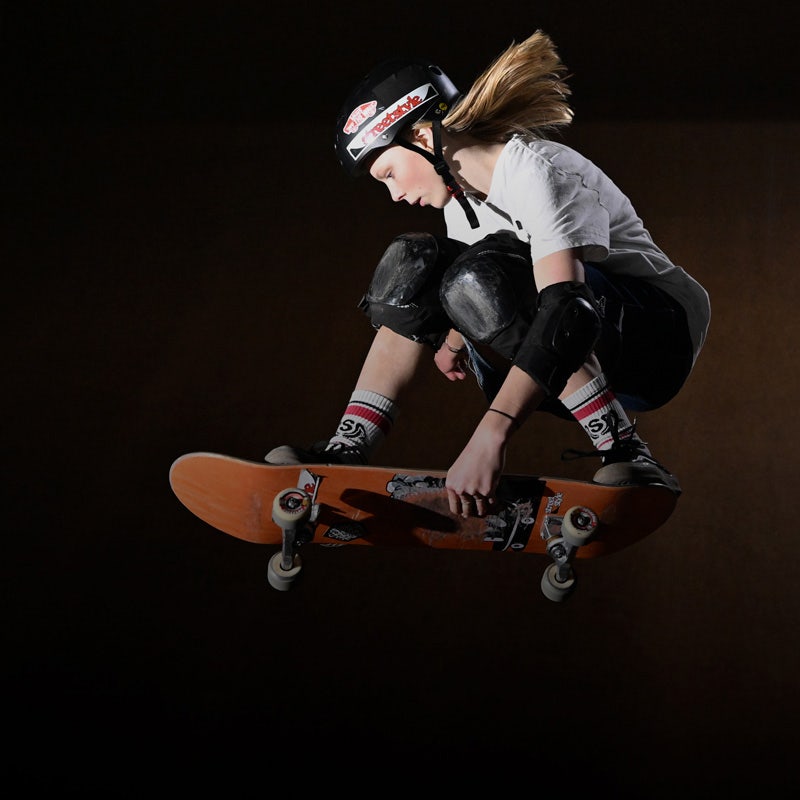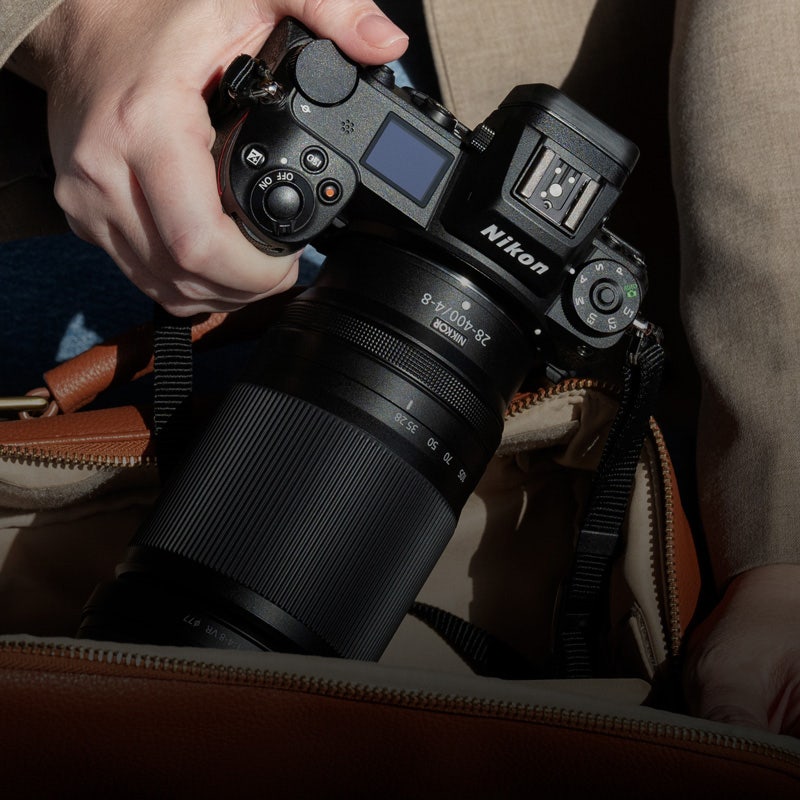

Learn & Explore - Z Series
Nikon Z 50: Z Series Performance On the Go


Designed to maximise portability
In October 2019, the Nikon Z series welcomed a new addition to the family: the Nikon Z 50. Inheriting the same design concept and operability as the Z 7 and Z 6, it boasts the revolutionary Z mount in a smaller, more compact body. Two lenses designed specially for the camera were also released at the same time: the NIKKOR Z DX 16-50mm f/3.5-6.3 VR and the NIKKOR Z DX 50-250mm f/4.5-6.3 VR. With this, the high image quality of the Z series is now more mobile than ever. What does this really mean? Read on to find out. (Report by: Takashi Ishida)
A Tour of Exterior Features
Nikon Z 50
Front
20.9-megapixel CMOS image sensor
The Z 50 is equipped with a DX-format (23.5mm x 15.7mm) CMOS image sensor with approximately 20.9 effective megapixels. It supports a native ISO sensitivity range of 100 - 51,200, promising excellent high ISO performance to help users capture an even larger variety of shooting scenes.
EXPEED 6 image-processing engine
The powerful processing capabilities of the EXPEED 6 image-processing engine takes visual image resolution and noise reduction capabilities up to the next level, and its sheer speed ensures minimal lag in the electronic viewfinder.
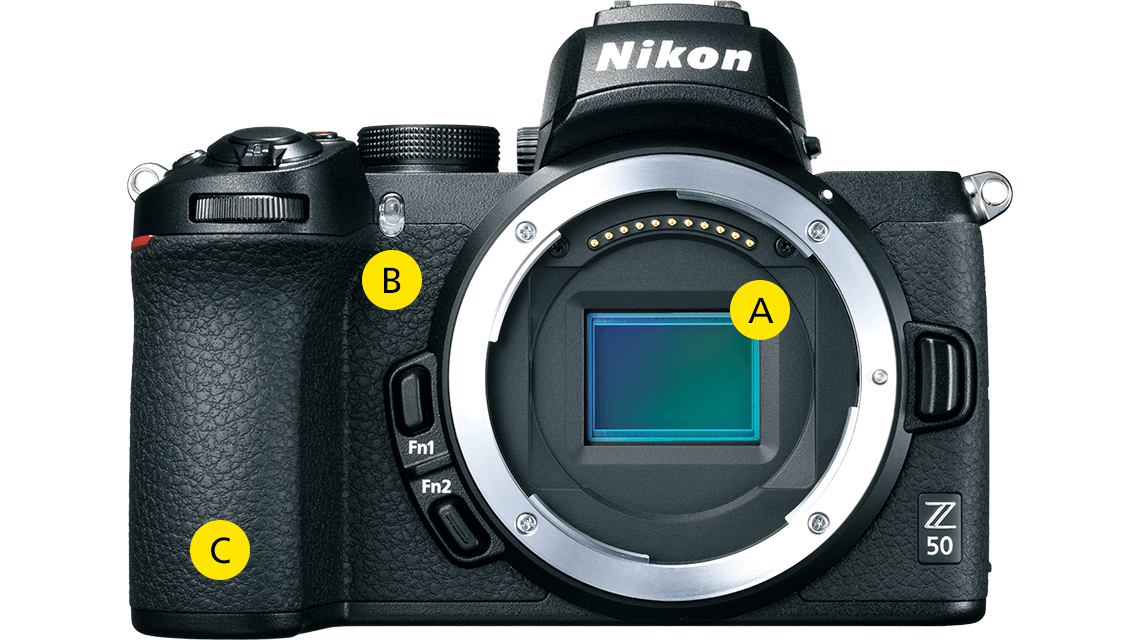

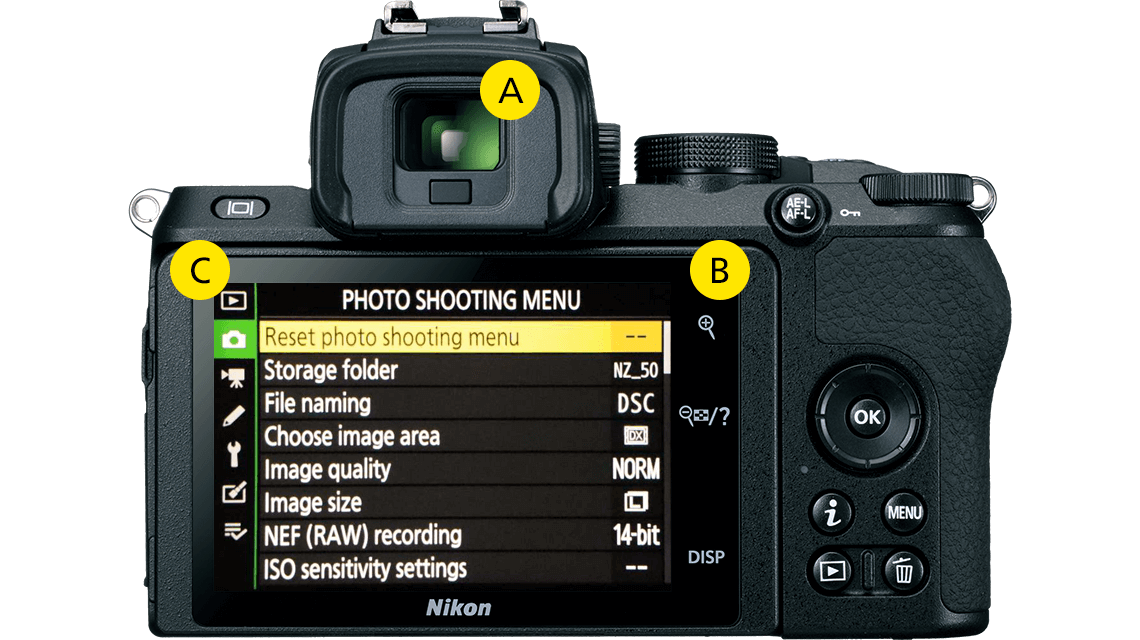

Rear
2.36 million dot OLED EVF
The 2.36 million dot OLED EVF achieves approximately 100% coverage of the scene with around 1.02x magnification, making it easier to achieve precise, pinpoint focusing. It can also display image playback and menus so that you don’t have to take your eye off the viewfinder.
Touchscreen buttons
The Magnify/Reduce buttons have been moved to next to the LCD monitor, and are now touchscreen buttons just like those on your smartphone. This makes it easier to operate the buttons while looking at the LCD monitor.
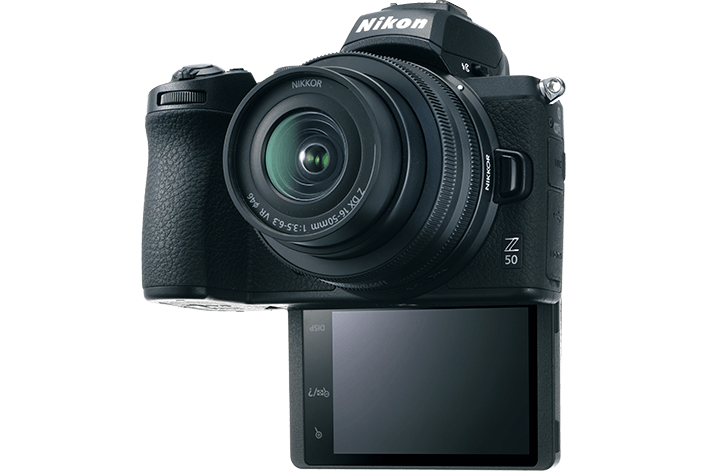

180° tilting rear monitor for convenient Self Portrait mode
The tilting LCD monitor on the Z 50 not only makes shooting from high and low angles easier, it also makes taking self-portraits a breeze. Tilting the monitor 180° downward automatically activates the Self Portrait mode, where all operation buttons and dials other than the shutter release button are locked. That way, you no longer need to worry about pressing the wrong button as you compose your selfie or we-fie. Getting your eyes in tack-sharp focus is also made easy, thanks to the highly-accurate Eye-Detection AF.
Top
Built-in flash/hot shoe
The Z 50 has a built-in flash that emits enough light to act as a fill flash, and with a few tricks in your arsenal, it can also become a useful tool for creative expression.
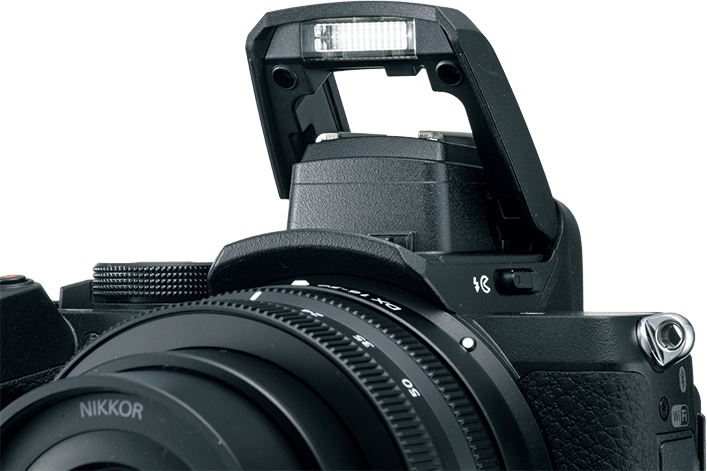

Shooting mode dial
This has been moved to the right side for simplified one-hand operation on the Z 50.
Photo/movie selector
The photo/movie selector has been integrated with the shooting mode dial for easier access. With the movie-record button nearby, it is easier to switch to movie-recording mode when needed.
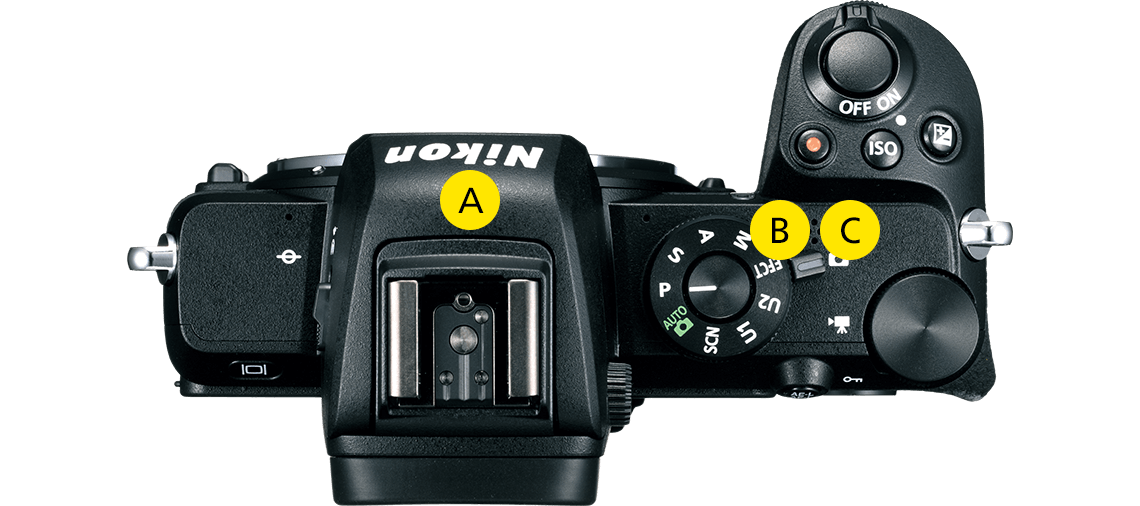

A beginner-friendly, all-round camera for any creations
Hands on with the Z 50
Pick up the Z 50, and you will immediately notice how it differs from the Z 7 and Z 6.
The shooting mode dial has replaced the display panel on the top right of the body, making it possible to operate the camera with only your right hand. The ergonomic grip feels extremely comfortable in the hand, and the ingenious button layout just above it makes it difficult to hit the wrong buttons while shooting through the viewfinder!
The menus and operational controls follow the same system as the Z 7 and Z 6, where one quick press of the “i” button provides access to the camera setting menus. It’s perfect for scenes where you need to react fast to capture fleeting moments, your style.
Compact and lightweight for increased mobility
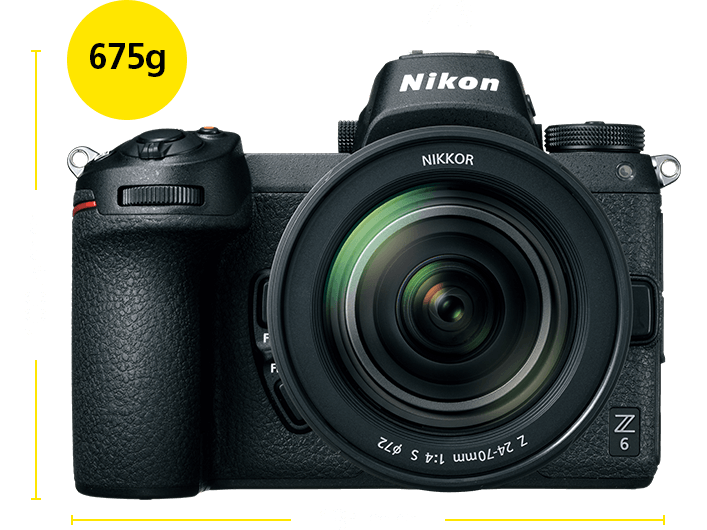

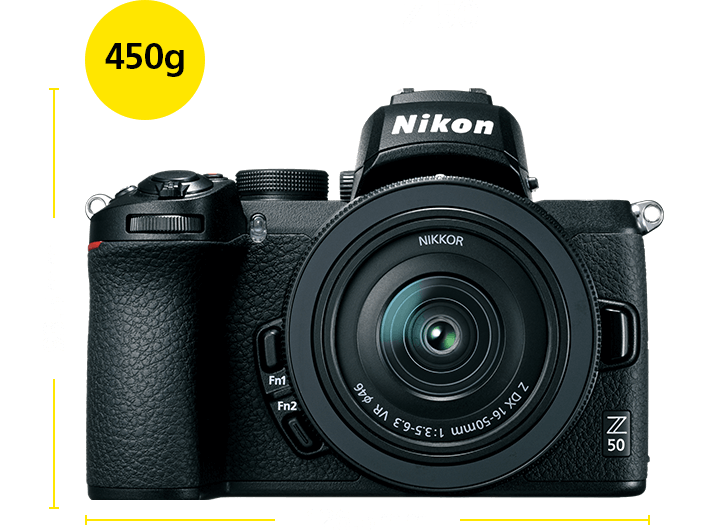

(With battery and memory card, but without body cap)
The numbers indicate that the Z 50 is only millimetres smaller than the Z 6, but it feels much smaller when you actually hold it. It weighs 30% less than the Z 6.
It’s a pleasure to take the camera out on a shoot. It’s small and light, with a viewfinder and tactile, manual controls to deliver the same performance of a Z series. The autofocus (AF) is highly accurate, and Eye-Detection AF is supported too. And because it is a mirrorless camera, you can see the effects of your exposure settings as you shoot, which makes it easier to capture masterpieces on the spot.
Wi-Fi and Bluetooth connectivity allow you to transfer those works to your smart device via the Nikon SnapBridge app and share them onto social media, right where you are. You can also pair the camera with external accessories such as the ML-L7 Bluetooth Remote Control (sold separately), which helps you control camera functions and release the shutter remotely—great for shooting situations where it’s not convenient to physically operate the camera.
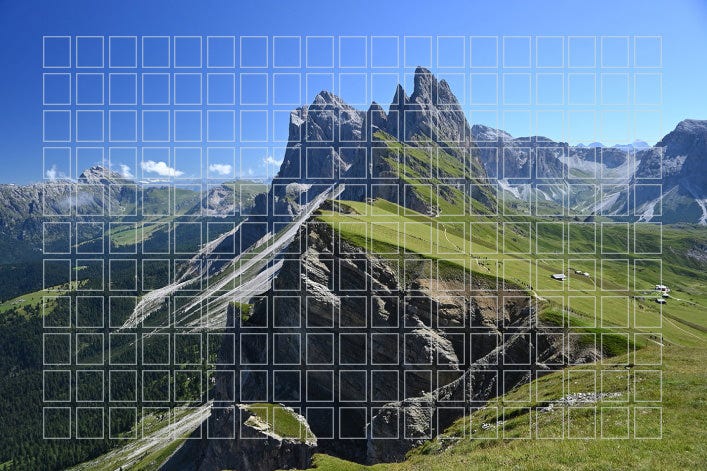

Large AF area with 209 focus points; excellent AF functionality
The Z 50 comes equipped with the same hybrid AF system as the Z 7 and Z 6, and uses one of the first Nikon CMOS sensors that incorporates focal plane phase-detection AF. It has 209 selectable AF points that cover approximately 87% × 85% (horizontally × vertically) of the image frame, allowing you to nail focus even on subjects that are at close to the edges of the frame.
The low light AF mode enables you to use the autofocus in even conditions as dark as EV-4, which is approximately equivalent to outdoors on a moonlit night with no other light sources—a situation where it can be hard to achieve focus manually. When shooting portraits, Eye Detection AF helps you ensure that the eyes of your subject are tack sharp. Even when there is more than one person in the frame, all eyes are detected, allowing you to quickly choose where you want to focus on.
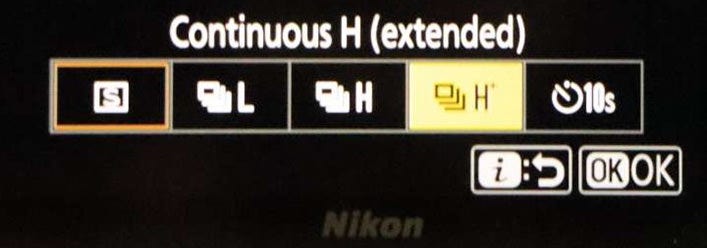

Up to 11 fps high speed burst shooting
Compatibility with a variety of lenses
Two NIKKOR Z DX lenses were released with the Z 50, both featuring compact bodies that make a perfect pairing with the camera. The NIKKOR Z DX 16-50mm f/3.5-6.3 VR is a versatile standard zoom lens that covers a wide-angle 16mm to a medium telephoto 50mm focal length range (24mm to 75mm at 35mm film equivalent), recommended for daily use. Meanwhile, the NIKKOR Z DX 50-250mm f/4.5-6.3 VR is a telephoto zoom lens that covers a medium to super-telephoto focal length range of 50 to 250mm (75mm to 375mm at 35mm film equivalent), providing extra reach to capture faraway subjects.
Both lenses are equipped with:
- Vibration Reduction (VR), which makes them very practical for use even in low light situations,
- A stepping motor (STM) that enables quiet, accurate autofocus control for both still photography and video recording
- A lens design that incorporates various lens elements to control flaring, ghosting and axial chromatic aberrations, resulting in high-quality images with reduced distortion and visual artifacts.
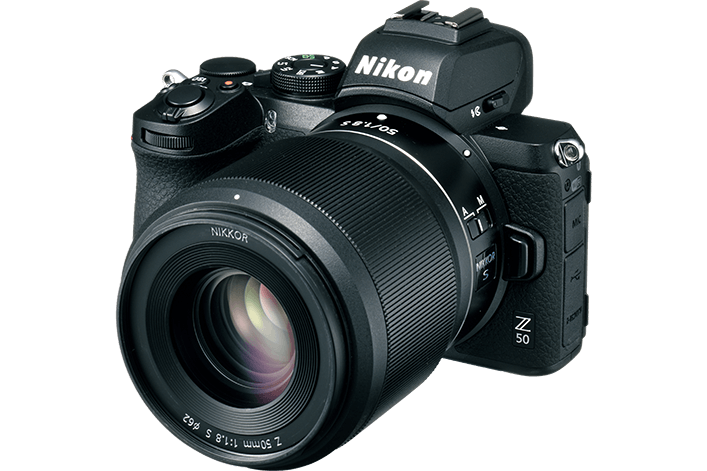

Z 50 attached with NIKKOR Z 50mm f/1.8 S
The Z 50 also takes the S-Line NIKKOR Z lenses without an adapter, as well as F mount lenses via the Mount Adapter FTZ. Note that using an FX-format lens will result in a 1.5x crop factor, i.e., images will appear to be shot on a focal length that is 1.5x longer.
Summing up
With most of the strengths of the Z 7 and Z 6 packed into a small, light body that you will find easy carrying around, the Z 50 offers excellent cost-performance. It’s great not just for new camera users, but also for more experienced photographers who want portable sub-camera that has an EVF and allows them to use their existing F mount lenses.
The Unique NIKKOR Z Lenses made for the Z 50
Released alongside the Z 50, the NIKKOR Z DX 16-50mm f/3.5-6.3 VR and NIKKOR Z DX 50-250mm f/4.5-6.3 VR were designed specially for a DX-format camera with the Z mount. Both lenses have built-in Vibration Reduction (VR), and together, cover a 16mm-250mm focal length range (35mm film equivalent (FX-format) focal length range of 24 to 375mm). This is ideal to capture most scenes, be it casual street photography or stunning landscapes. When paired with the Z 50, they promise a compact, portable yet versatile system that you will want to take with you as you explore the world.
The ultra-thin standard zoom lens
NIKKOR Z DX 16-50mm f/3.5-6.3 VR
A retractable standard zoom lens that covers a 35mm film/FX-format equivalent focal length range of 24 to 75mm. Turn the lens barrel to extend it before you shoot. When fully retracted, it is an extremely thin 32mm long, which balances well with the compact body of the Z 50. Its built-in VR mechanism reduces camera shake by up to 4.5 shutter speed stops’ equivalent. It is versatile enough to capture wide natural landscapes, portraits with bokeh, street scenes, and close-ups of flowers and accessories.
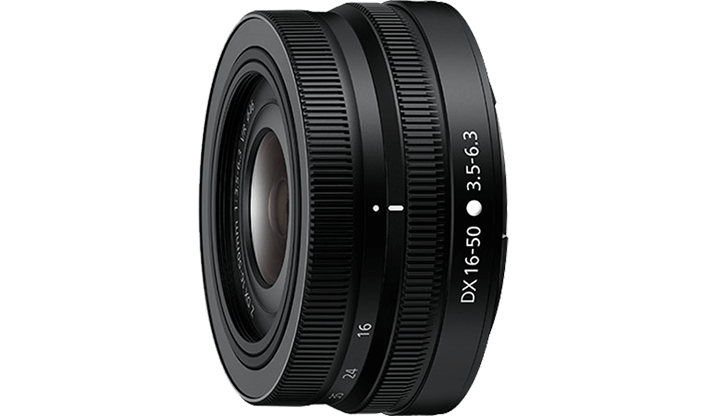

Key specifications
- Lens construction: 9 elements in 7 groups
- Diaphragm blades: 7 (rounded diaphragm opening)
- Minimum focusing distance: 0.2m (at 24mm)
- Maximum magnification: approx. 0.2x
- Filter diameter: φ46mm
- VR image stabilisation: up to 4.5 stops
- Diameter x length: approx. 70×32mm (when fully retracted)
- Weight: approx. 135g
A telephoto zoom lens that reaches as far as 375mm
NIKKOR Z DX 50-250mm f/4.5-6.3 VR
A lightweight telephoto zoom lens that covers a focal length range of 75 to 375mm (FX-format equivalent), the NIKKOR Z DX 50-250mm f/4.5-6.3 VR pairs well with the Z 50 to provide excellent mobility even when shooting with long focal lengths. Its built-in VR mechanism reduces camera shake by up to 5 shutter speed stops’ equivalent. It is available as a kit lens for the Z 50, just like the NIKKOR Z DX 16-50mm f/3.5-6.3 VR.
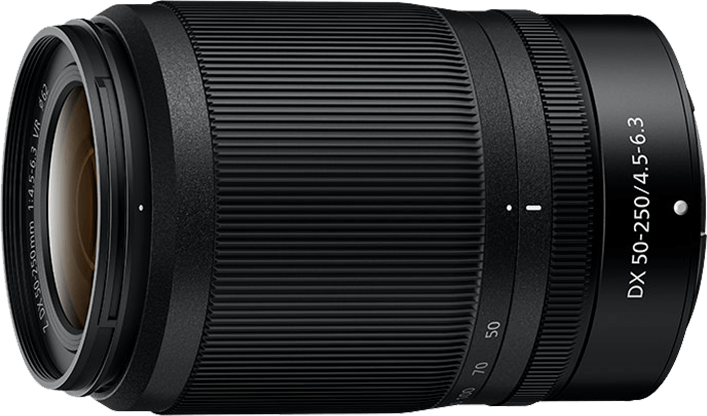

Key specifications
- Lens construction: 16 elements in 12 groups
- Diaphragm blades: 7 (rounded diaphragm opening)
- Minimum focusing distance: 0.5m (at 50mm)
- Maximum magnification: approx. 0.23x
- Filter diameter: φ62mm
- VR image stabilisation: up to 5 stops
- Maximum diameter x length: approx. 74×10mm
- Weight: approx. 405g


Nikon Z 50/ NIKKOR Z DX 50-250mm f/4.5-6.3 VR/ FL: 250mm (375mm equivalent)/ Aperture-priority auto (f/6.3, 1/80 sec, EV-0.3)/ ISO 100/WB: Daylight
Amongst hues of blues and purples, it may seem a little tricky to get a shot that clearly defines the subject from the background. Yet, using the long end of the NIKKOR Z DX 50-250mm f/4.5-6.3 VR created the shallow focus that turned the flowers in front of the subject into beautiful, creamy purple foreground bokeh. At the same time, the subject remained impeccably sharp. The optical performance of this lens makes it an undeniably excellent investment.
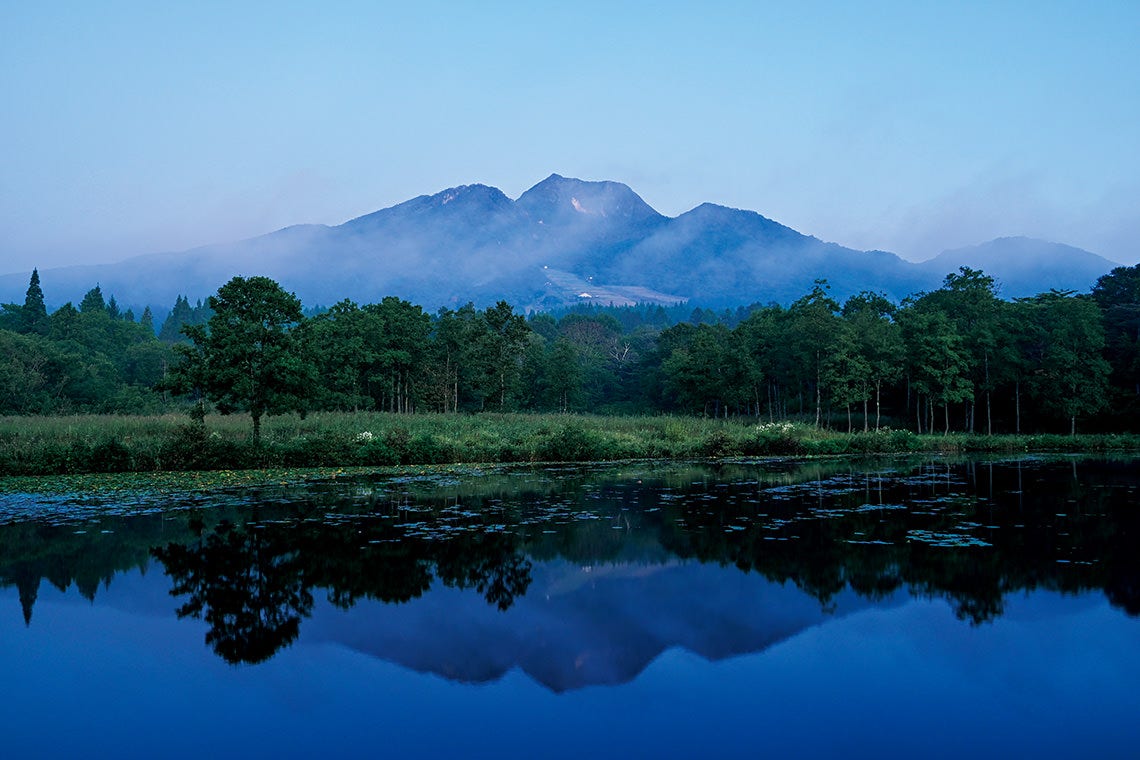

Nikon Z 50/ NIKKOR Z DX 16-50mm f/3.5-6.3 VR/ FL: 20mm (30mm equivalent)/ Aperture-priority auto (f/4.5, 1/2 sec, EV±0)/ ISO 200/ WB: 5,000K
This was taken just before sunrise when it was still quite dark. Using manual focus together with the touch shutter allowed me to capture a sharp shot without camera shake, without the need for a remote shutter release.


Nikon Z / NIKKOR Z DX 50-250mm f/4.5-6.3 VR/ FL: 250mm (375mm equivalent)/ Shutter-priority auto (f/10, 1/500 sec, EV-0.3)/ ISO 2000/ WB: Auto
I was able to shoot at the FX-format equivalent focal length of 375mm, with a total equipment weight of 850g. Everything was easy to manoeuvre and my shots barely had any visible blurring. It was certainly a pleasant experience.


Takashi Ishida
Enthralled by the beauty of the terrace rice fields in Joetsu City, Niigata Prefecture where he resides, Ishida started photographing landscapes even as he balanced his day job as a physician in a general hospital. He believes that the unique qualities of a place and one’s feelings for it are very important for landscape photography.
